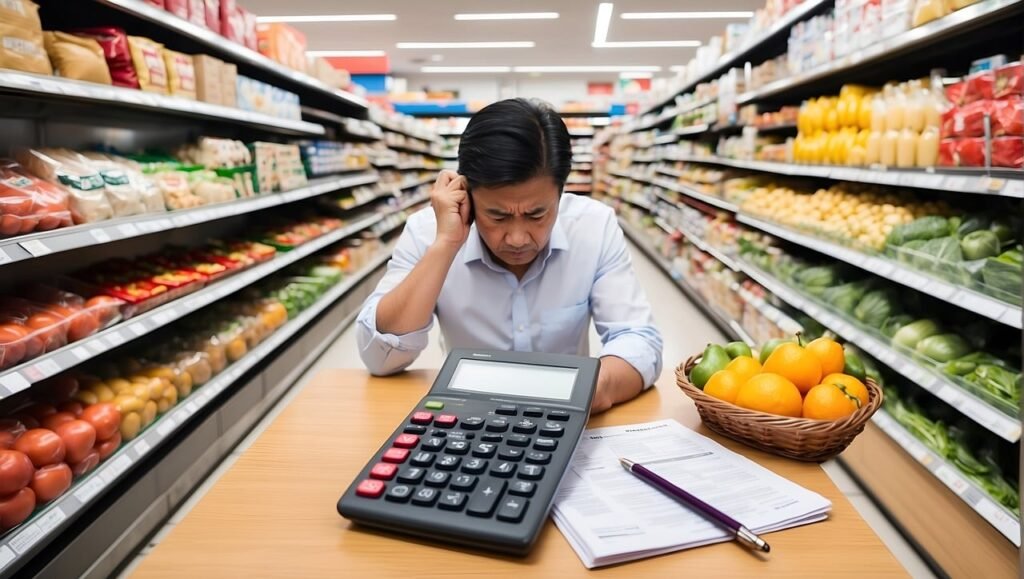What is Inflation and Deflation? Let's Decode the Mystery! 🌟
Ever felt like prices of your favorite chips, coffee, or even petrol keep going up every year? That’s inflation in action! But have you ever heard about prices falling consistently? That’s called deflation. Let’s break these terms down in a way that makes perfect sense (no economic jargon, I promise).

What is Inflation?
Inflation is when the price of goods and services increases over time. Simply put, the same ₹100 buys you less than it used to.
A Simple Example for Inflation 🎯
Imagine you used to buy a samosa for ₹10 in 2013. Today, the same samosa costs ₹20. That’s inflation — prices rise, and money loses its purchasing power.
Why Does Inflation Happen?
- Demand-Pull Inflation: Too many people want something (demand), but there’s not enough of it (supply).
- Cost-Push Inflation: The cost of making stuff increases, so sellers charge more.
What is Deflation?
Deflation is the opposite of inflation — when prices keep falling. While this might sound good (cheaper stuff, yay! 🥳), it’s not always a good thing. Deflation can signal that the economy is slowing down, as people and businesses aren’t spending enough.
A Simple Example for Deflation 🎯
Imagine you bought a phone for ₹20,000 last year. But this year, it’s available for ₹15,000 because demand fell. That’s deflation in action.
Inflation and Deflation in Day-to-Day Life 💡
Inflation’s Impact:
- Rising Costs: Food, fuel, and rent become more expensive, squeezing your wallet.
- Savings Decrease: The money in your piggy bank buys you less in the future.
- Higher Salaries (Sometimes!): Companies may increase wages, but not always enough to beat inflation.
Deflation’s Impact:
- Falling Salaries: Businesses cut wages because of lower profits.
- Job Losses: Companies produce less and might lay off workers.
- Cheaper Products: Sounds good, but it often comes with economic slowdown.
India’s Inflation Data Over the Last 10 Years 📊
| Year | Inflation Rate (%) | Major Events Impacting Inflation |
|---|---|---|
| 2013 | 9.39 | High food and fuel prices |
| 2014 | 5.8 | Decline in global crude oil prices |
| 2015 | 4.9 | Stable prices due to improved agricultural output |
| 2016 | 4.5 | Demonetization impact |
| 2017 | 3.3 | Stable inflation post-GST rollout |
| 2018 | 3.9 | Rising global oil prices |
| 2019 | 4.8 | Higher onion and vegetable prices |
| 2020 | 6.2 | Supply disruptions due to COVID-19 lockdowns |
| 2021 | 5.1 | Recovery from COVID, rise in crude oil prices |
| 2022 | 6.7 | War in Ukraine, global inflationary pressures |
Inflation or Deflation: What’s Worse?
It depends on the situation:
- Moderate inflation is healthy, as it encourages spending and keeps the economy moving.
- Deflation is dangerous if it lasts too long, as it slows economic activity and increases unemployment.
Quick Pro Tips to Beat Inflation:
- Invest Smartly: Don’t just save; invest in assets like mutual funds or stocks.
- Spend Wisely: Differentiate between needs and wants.
- Upskill Yourself: Inflation-proof your future with skills that increase your earning potential.
Hope this article made these big words easier to understand! Comment below if you want me to explain other tricky finance terms. 😊